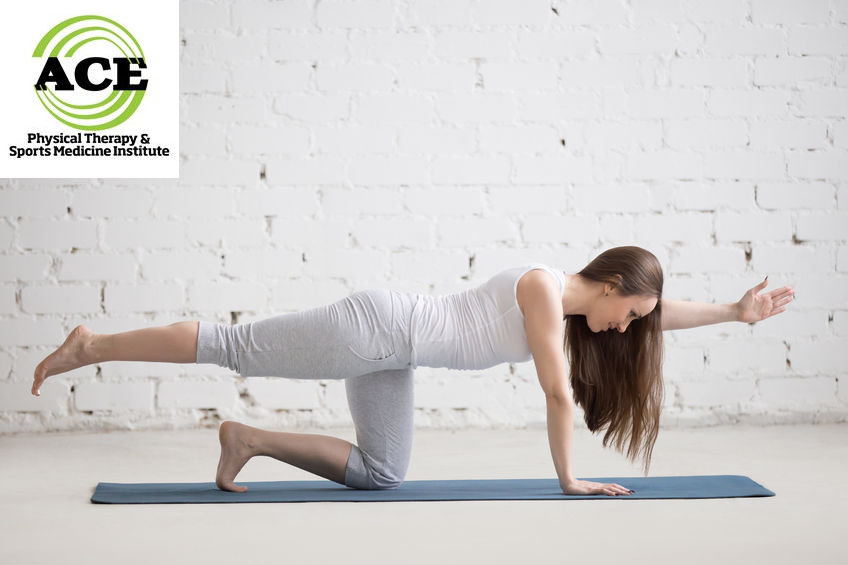NEW APPROACH TO LOW BACK PAIN TREATMENT

Tid Bits of Info
- Low back pain occurs in approximately 80% of the population at least once in their lifetime.
- Low back pain is the number one cause of missed days from work.
- Americans spend 50+ billion dollars per year on the treatment of low back pain.
- Low back pain will usually resolve by itself regardless of the treatment but it can take a long time.
- Seek the advice and treatment of a Physical Therapist if you experience low back pain.
Low back pain is an unwelcome visitor. It can disrupt our daily activities, our sleep, and even our mood. Low back pain is common, so most of us have or will experience it at some point. The lower back (the lumbar spine) is one of the most commonly and frequently injured body parts. We can suffer from this pain for a variety of reasons such as overworking through a strenuous activity or simply staying in the same posture too long. The pain may also vary from mild to severe. While medication used to be the primary treatment, health professionals now advocate a good exercise routine that can help alleviate pain and restore the body.
In the past, the treatment for low back pain (LBP) consisted of rest and medication. If the pain was bad enough, the patient was put on bed rest or in a hospital for 3-10 days to administer drugs and mechanical traction. All treatment protocols for LBP have moved away from this form of passive, drug based approach. Now the American College of Physicians (ACP) promotes a nondrug approach to the treatment of LBP.
The lumbar spine consists of 5 vertebra that are located at the base of the spine. These lumbar vertebra join the thoracic vertebra and most chronic low back pain occurs at the distal end of the lumbar spine. The area is furthest from the head and neck and the L4, L5 and S1 vertebra absorb all of the ground forces that are present and placed upon the human skeleton. There is a significant need for the joints of the lumbar spine to have the dynamic support of the muscles that surround that part of the spine. In the absence of muscular support the joints and everything that holds those joints together is subjected to a tremendous amount of sheer and compressive force. These forces will eventually take their toll on the human spine, causing it to break down and resulting in pain.
Doctors and healthcare professionals agree that most LBP will resolve regardless of the type of treatment but it can take several weeks/months. Certain treatments are able to shorten the time period of recovery in most instances. The ACP no longer promotes the use of drug (possibly acetaminophen), and suggests the use of heat, Physical Therapy modalities, and exercises instead of drug related protocols. The acute (approximately less than 4 weeks) and sub-acute (approximately 4 -12 weeks) patients with LBP have shown equal or better out comes of reducing their symptoms with no drugs and the use of modalities and exercise. The chronic LBP patient might benefit from the use of NSAIDs but there is no hard evidence that supports the use of narcotic drugs to resolve the patient’s symptoms. The chronic patient has demonstrated a better ability to cope with the symptoms and perform activities at a higher functional level when they are consistent with an exercise program.
There are numerous stretches and strengthening exercises that will target all of the key muscles that can have an influence on the status of the lumbar spine. These muscles extend from the shoulder blades to the knees. Commonly referred to as the “core” muscles they are responsible for movement and dynamic stabilization of the lumbar spine. Without the support from these muscles the lumbar spine will be highly susceptible to experiencing an injury and causing LBP.
Physical Therapists are highly educated healthcare professionals and some of them specialize in the treatment of orthopaedic conditions including LBP. These healthcare professionals can provide hands on treatment, use modalities and prescribe an exercise routine that will help to stimulate the proper muscles that will reduce the symptoms of LBP.
Going to see a Physical Therapist is easy and does not require a visit to your doctor. The Physical Therapist is a licensed healthcare provider that will assess your status and offer an in-house treatment protocol as well as at home routines. They will discuss ergonomics and body mechanics that will help to protect your lumbar spine. Changes in lifestyle and the way you perform certain activities can have a profound effect on your lumbar spine.
Changing the way medical professionals approach the treatment of particular pathologies is difficult. Trying to convince them that a “new” or “different” protocol is as effective or more effective can be extremely challenging and requires a great deal of medical evidence. The simple fact that the ACP has begun to promote a “new” nondrug protocol for the treatment of LBP indicates that the medical science behind it is sufficient to warrant their support.


























Physical Therapy is essential, though I think it’s important to mention a lot of that can be done by yourself. I suffered from back pain for many years.